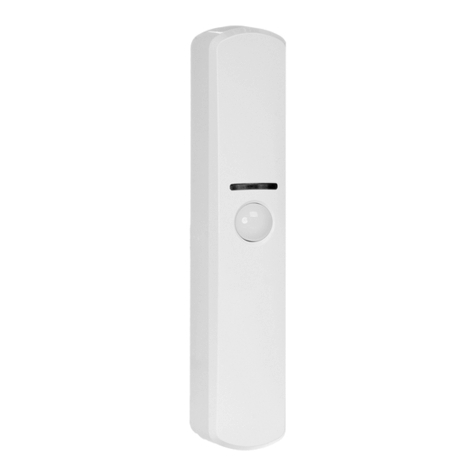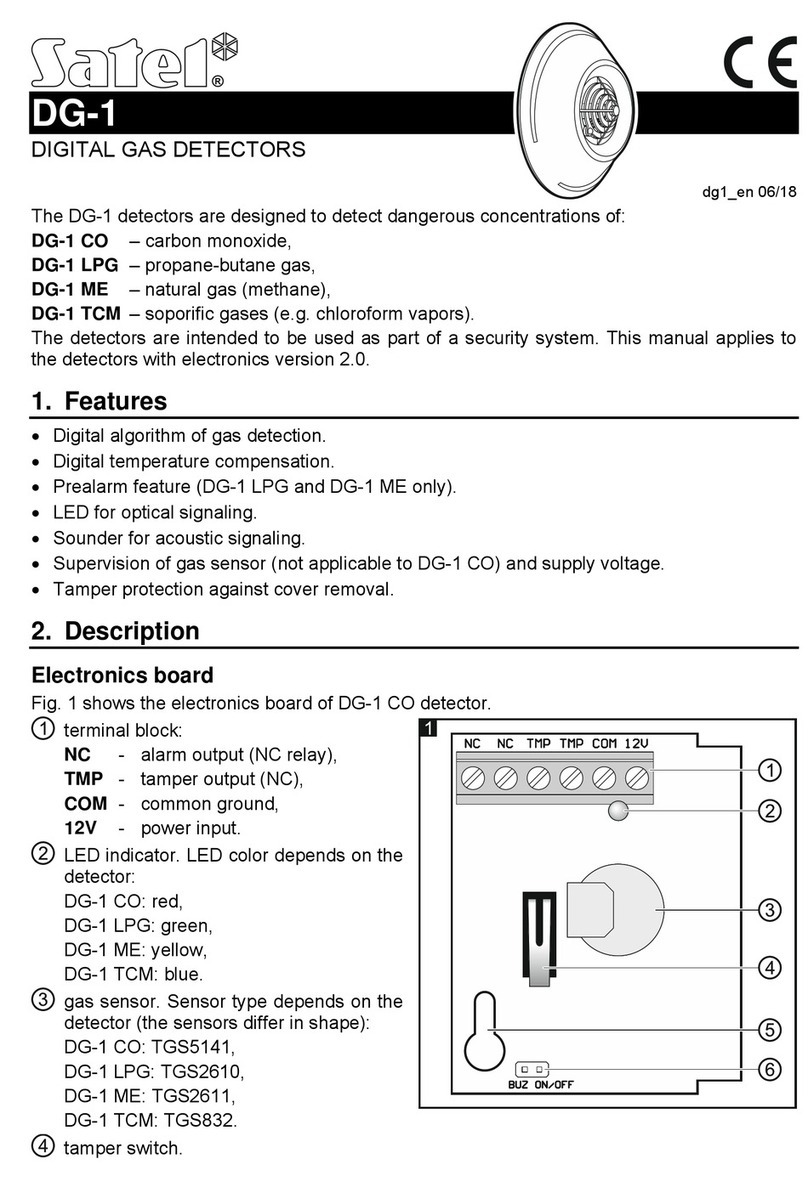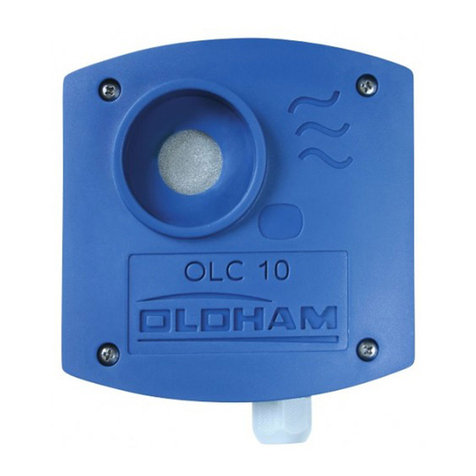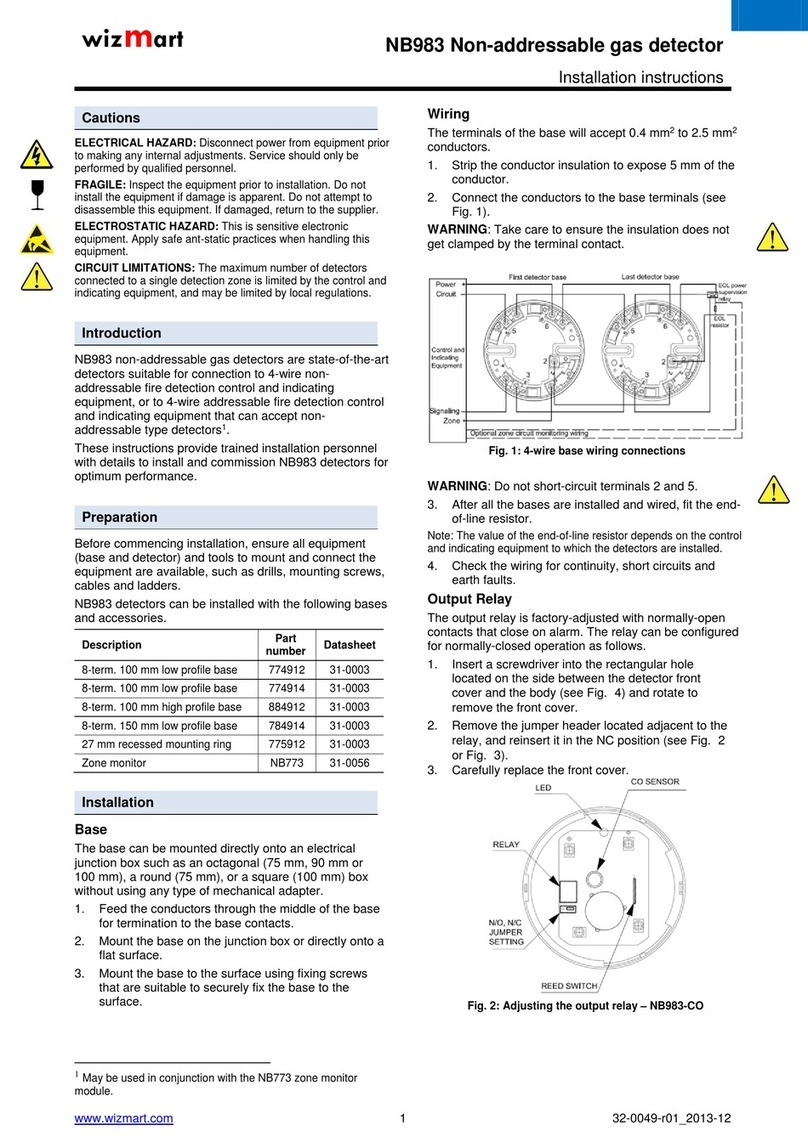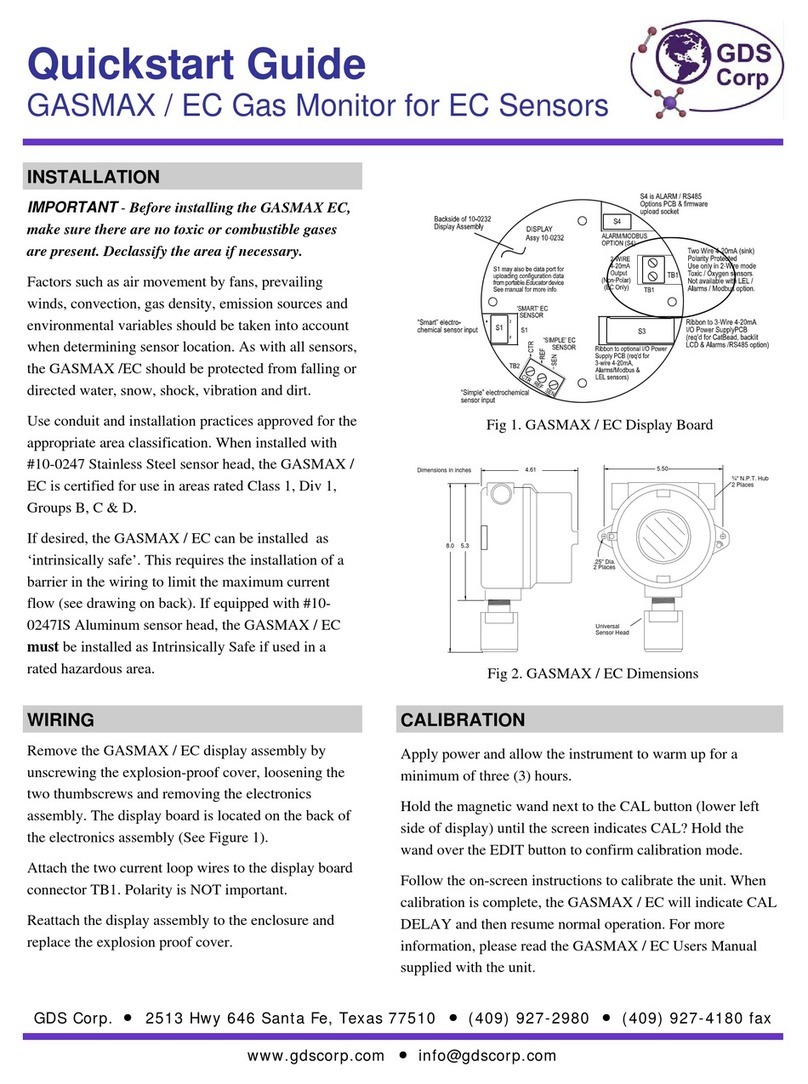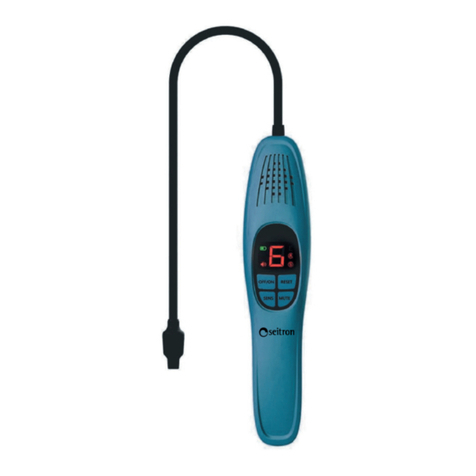
2. Autodiagnostics
The detector is monitoring the supply voltage (voltage drop below 9V (±5%) will trigger
a failure alarm) and testing performance of the gas sensor. Troubles are indicated by
short sound signals and LED flashes separated by short intervals (0.25 second LED
blinking / sound, 0.25 second interval, etc.).
3. Installation and commissioning
The DG-1 digital gas detectors are designed for indoor installation.
Considering specific character of the gases to be detected, the DG-1 TCM
and DG-1 LPG detectors should be mounted in low position, just above
the floor, the DG-1 ME detector in high position, just under the ceiling, and
DG-1 CO detector at a height of about 1.5 meter.
1. Open the housing as shown in Fig. 2.
Fig. 2. Opening the detector housing.
2. Remove the electronics board.
3. Make suitable openings for screws and cable in the rear housing panel.
4. Pass the cable through the opening prepared.
5. Secure the rear housing panel to the wall.
6. Fasten the electronics board.
7. Connect the leads to corresponding terminals.
8. Using the jumper, decide whether the buzzer is to be enabled, or not.
9. Close the detector housing, making sure that the indicators on the cover and on
the rear housing panel are aligned (see Fig. 3).
10. Switch on power supply of the security system (when the detector is used as part
of the security system), or the detector itself (when the detector is a stand-alone
device). Putting the detector into operation is signaled by three short sounds,
accompanied by blinking of the LED.
Note: During the detector operation the gas sensor heats up.






